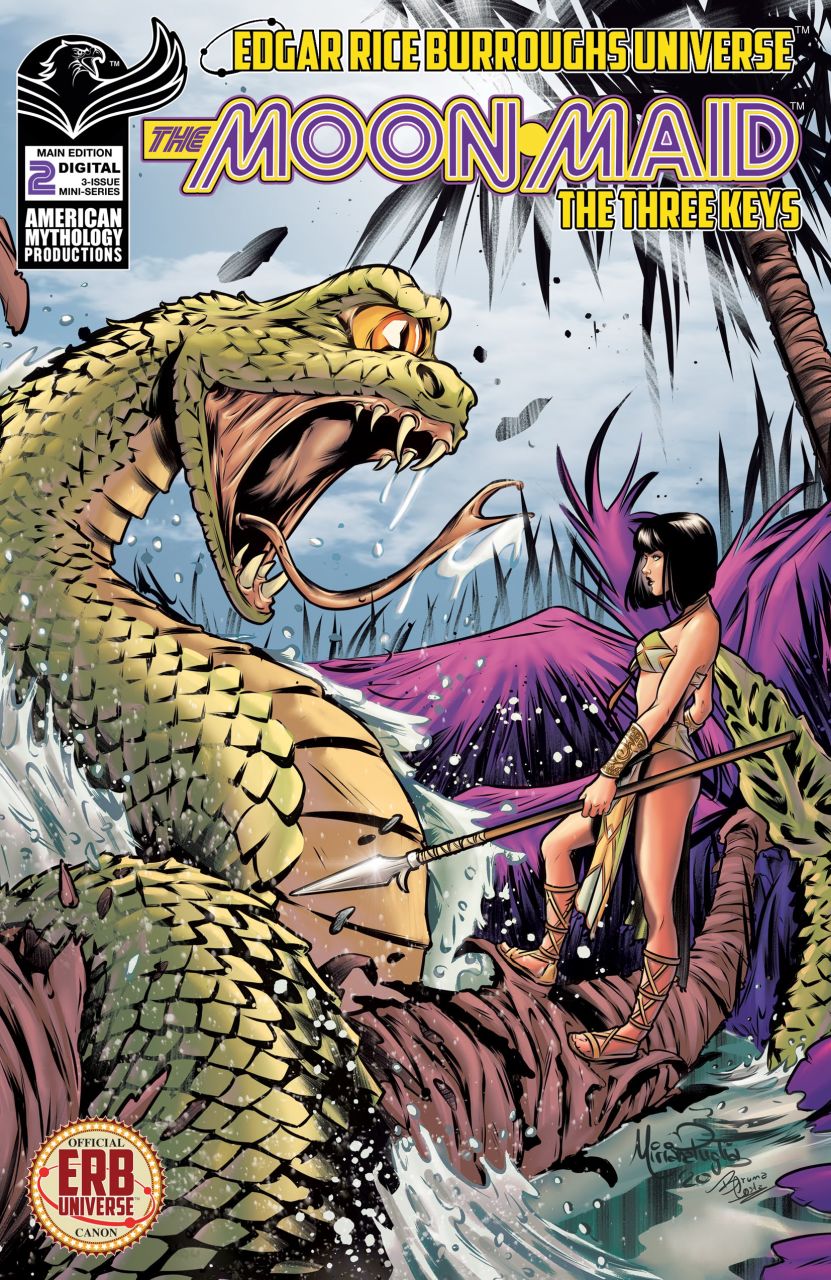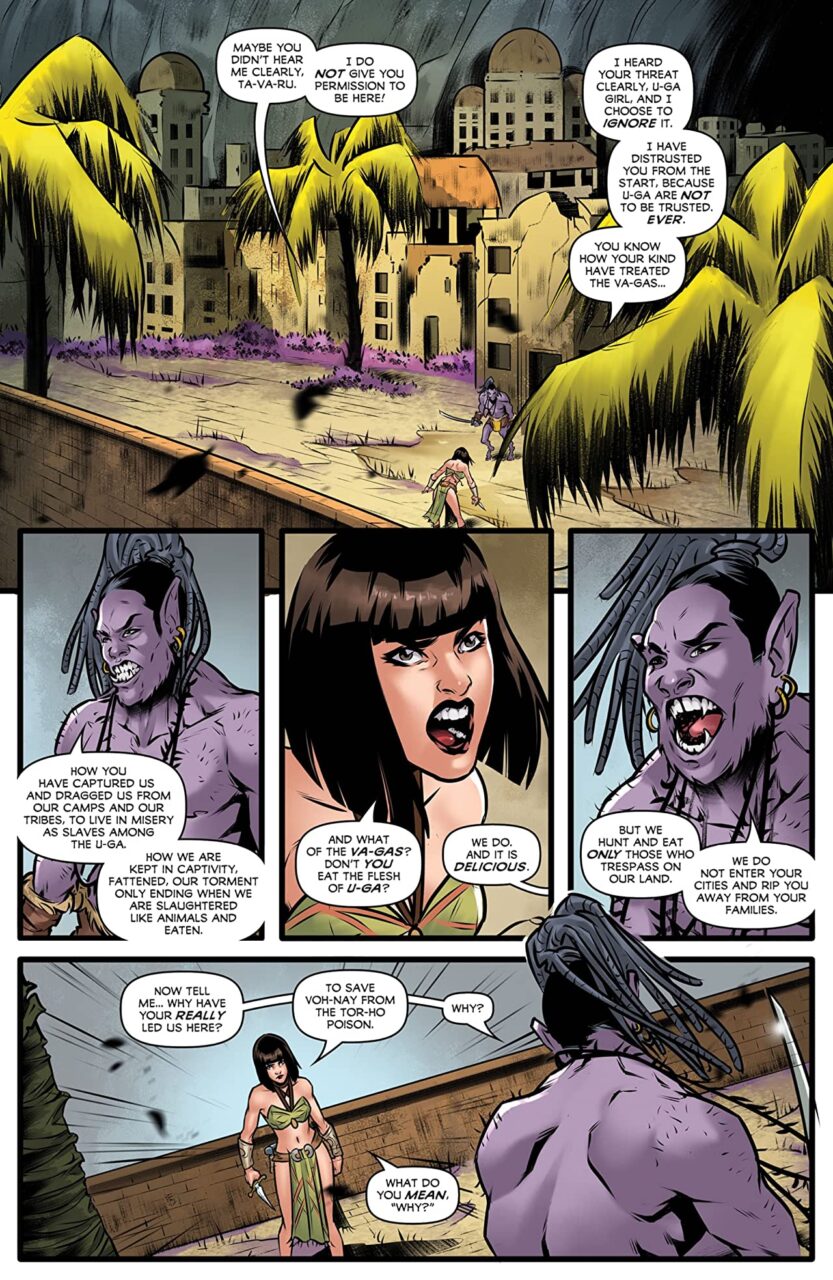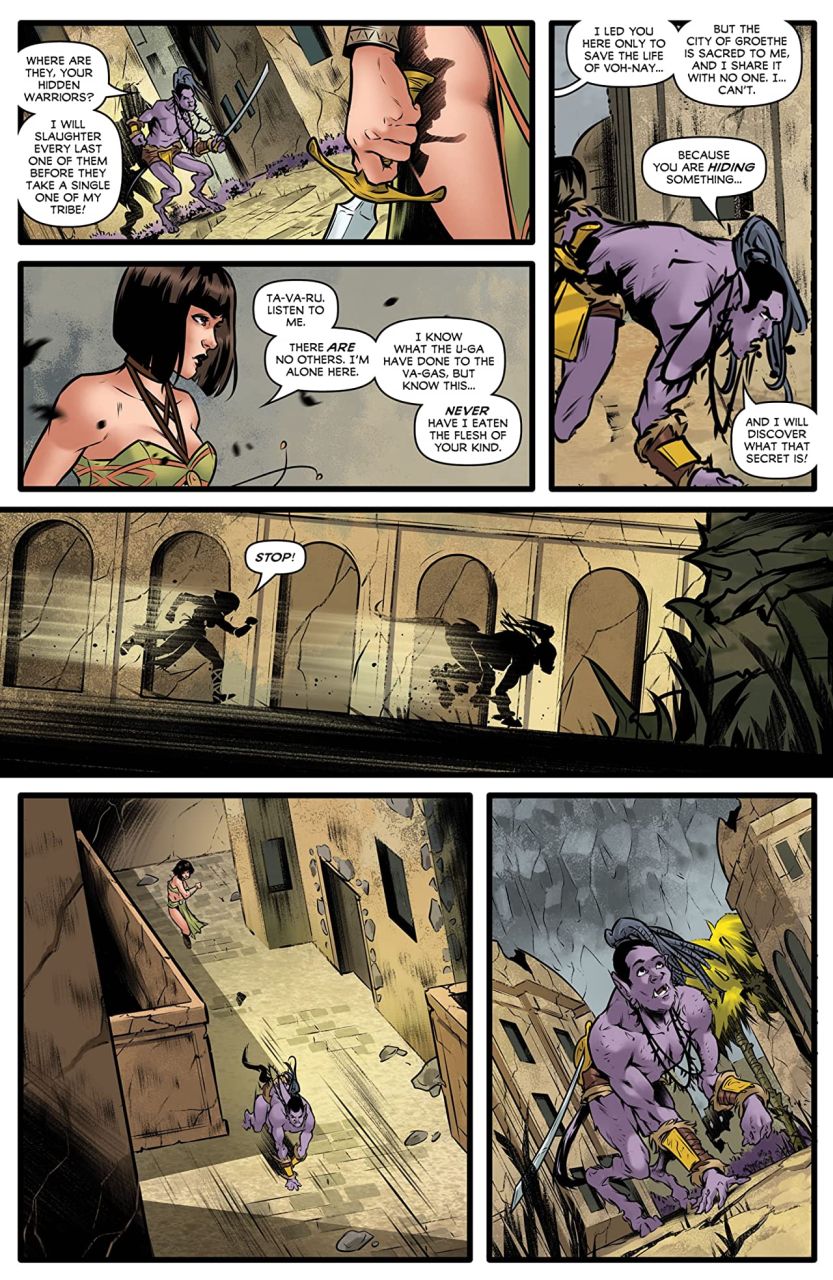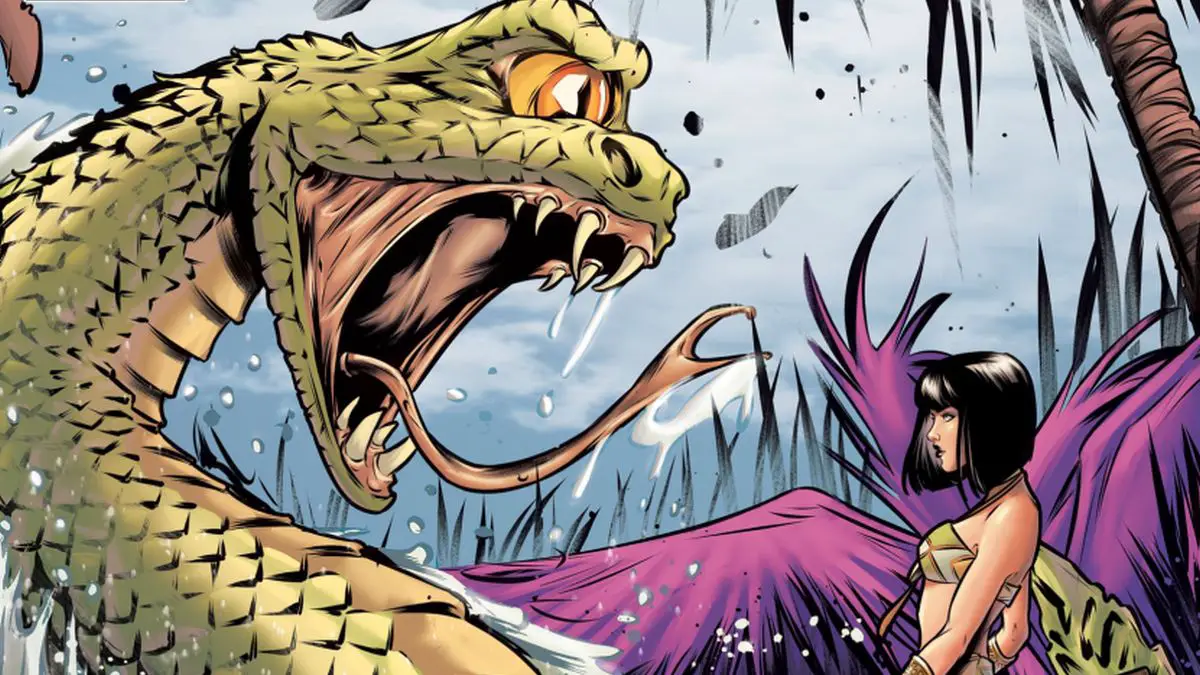In THE MOON MAID: THREE KEYS #2, available from American Mythology on March 31, 2021, Loh-ee-nah defends Goethe against the Va-Gas who don’t trust their host and Kalkars who want Goethe’s secrets.
The Details
- Written By: Mike Wolfer
- Art By: Miriana Puglia
- Colors By: Periya Pillai
- Letters By: Natalie Jane
- Cover Art By: Miriana Puglia, Bruna Costa
- Cover Price: $3.99
- Release Date: March 31, 2021

Was It Good?
It was not bad, but not as good as the first issue. Still good, just less good.
This is a 3-issue arc, so when you get to the mid-point of the story you’re telling, you want to have all the big pieces in place for the resolution in the third issue. Issue #2 spends an inordinate amount of time on Loh-ee-nah and the Va-gas debating over the political wrongs of the past between their peoples. On some points, they’re arguing over wrongs that happened decades ago.
Wait! Don’t Forget To Sign Up For The Comical Opinions Newsletter.
It’s 100% FREE. Sign up NOW!
That’s not to say you can’t have debates in storytelling but it takes up almost the entire issue, and when you’re mind starts wandering and you start checking the page count, that’s a sign that the plot is taking too long to arrive at the next step.
The art is excellent, and things pick up when the Kalkars show up, but we end the issue with our protagonist still holding on to secrets. You start to feel the plot threads won’t have enough space to finish or the next issue will be rushed.
It sounds like I’m down on the issue, but it’s still better than most comics on the shelves these days. That said, compared to issue #1, this issue needed a little more pep in its step.
What’s It About?
[SPOILERS AHEAD – Click here if you just want the score without spoilers]
We pick up immediately where we left off at the end of issue #1. Read our THE MOON MAID: THREE KEYS #1 review for the lowdown.

Loh-ee-nah (we’ll call her Loh for short) demands the most mistrusting member of the Va-gas group, Ta-va-ru, leave the abandoned city she caretakes. Ta-va-ru is unwilling to give up his mistrust of Loh and is determined to find out what (or who) she’s hiding. Ta-va-ru runs through the city until he comes to a circular theater where he finds a statue of one of Loh’s people holding the head of a Va-gas.
It looks bad, and it’s clear from the architecture, the statue, and historical knowledge of both their peoples the Va-gas were brought here to be sold off as slaves or meat. Loh doesn’t hide or deny what the cities residents had done in the past, but she’s adamant that those days are long gone.
Whether intentional or not, the story appears to be inferring parallels with slavery and racism in America. The contentious history between the Va-gas and the U-ga may be consistent with the source material, so it could simply be a coincidence. Their debate touches on universal truths about the divide between races where slavery and oppression are involved.

Ta-va-ru’s mistrust boils over, and he draws his sword. Loh holds her own against the Va-gas warrior, but before their fight takes a lethal turn, Voh-nay stumbles to the theater to order her warrior to stop. Voh-nay is still weak from the venomous bite, but Loh’s medicine is helping.
Voh-nay forces a truce of sorts, and the Va-gas agree to stay until Voh-nay has fully recovered. During their time in Goethe, the Va-gas gain respect for Loh when they observe how hard she works to tend the city, provide food for her guests, plant fields, and develop the means to live a fruitful life. Ta-va-ru hasn’t completely released his mistrust, but he acknowledges Loh is better than he assumed.
One day, Voh-nay are gathering fruits when they notice strange vines hanging down over the cliff’s edge. Loh realizes they’re ropes and that they’re being invaded, probably by Kalkars. They race back to their dwelling and the other Va-gas to find a group of Kulkars has invaded the city.

The Va-gas easily defeat the invaders and feast on their man flesh. Loh chastises the group for killing all the invaders before getting information about why they’re here. One of the Kalkar invaders gets away and reports back to his captain that the city is under Va-gas control and they need more men to take the city.
We conclude the issue with a heart-to-heart talk between Loh and Voh-nay.
How Does It End?
The Kalkar invader mis-heard what Loh was saying about Goethe. Voh-nay acknowledges Loh has a dream worth pursuing. Goethe has a secret.
Final Thoughts
THE MOON MAID: THREE KEYS #2 deeply explores the complexity of mistrust and bridge-building between two races with a complicated history. The art is excellent, and the volumes of conversations are well written, but the story lingered too long on racial understanding when an inevitable threat is coming.
Score: 8/10
We hope you found this article interesting. Come back for more reviews, previews, and opinions on comics, and don’t forget to follow us on social media:
If you’re interested in this creator’s works, remember to let your Local Comic Shop know to find more of their work for you. They would appreciate the call, and so would we.
Click here to find your Local Comic Shop: www.ComicShopLocator.com

